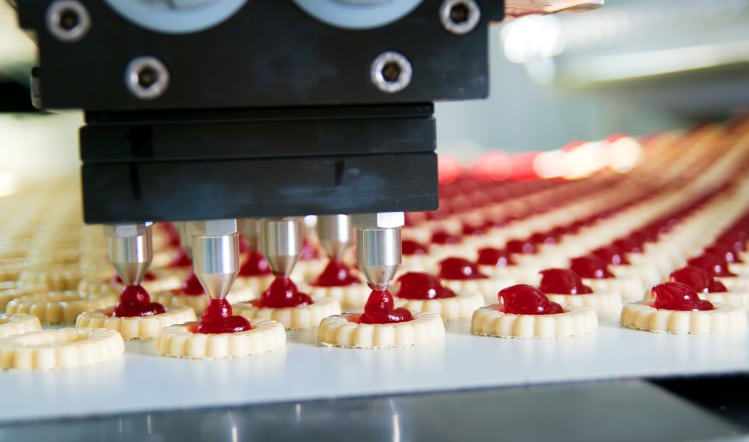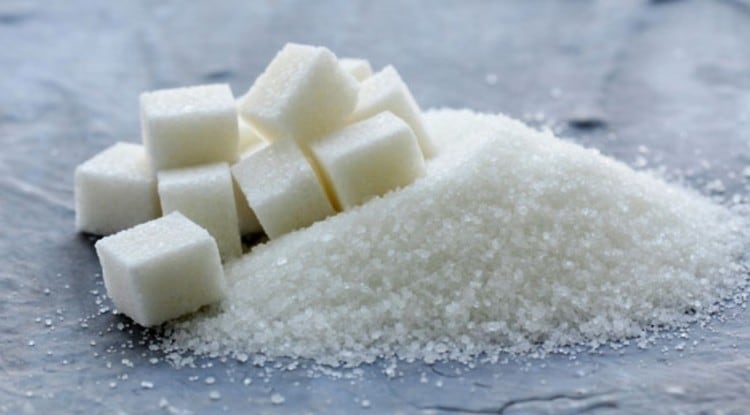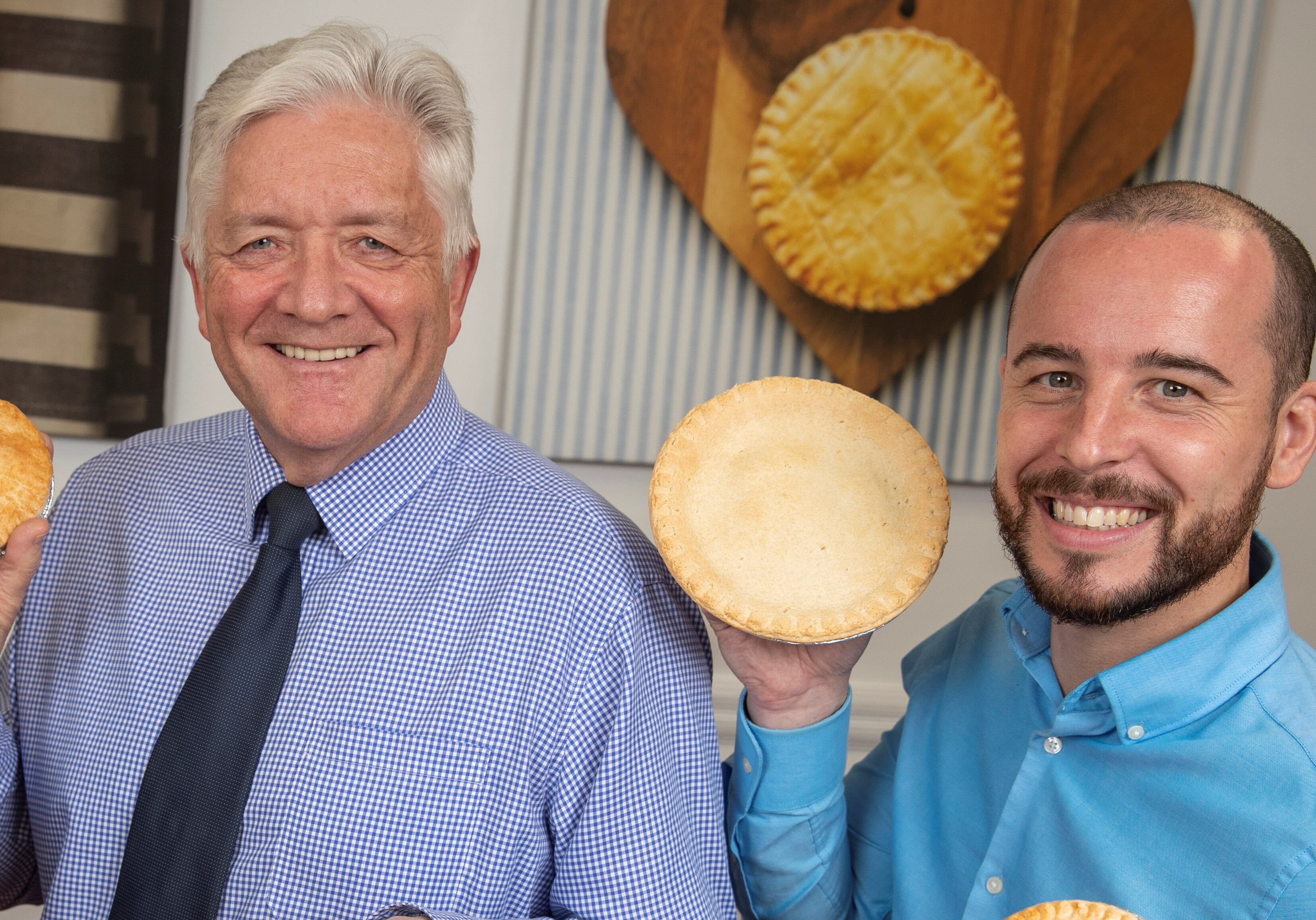Across the food and drink manufacturing spectrum, businesses are perpetually having to weigh up the competing claims of a market-driven need for flexibility and the cost and efficiency benefits that come with automation.
However, as cakes and desserts business BBF makes clear, this dilemma is especially keenly felt in the celebration cakes segment, which is one of its areas of specialisation.
“Given the rise in the National Living Wage (NLW) and the overall availability of labour, the most attractive investment projects tend to be those that reduce the number of operators,” says BBF operations director David Gallagher. “But in areas such as celebration cakes, we’re less automated, and always have to build in a lot of flexibility.”
While full automation of sections of the bakery process may make sense for all sorts of reasons, clearly, it is not always the answer. The logical approach, equipment suppliers argue, is to assess the merits of both options at each critical point of the processing operation.
The need for flexibility in celebration cakes is particularly relevant to any top- and side-masking equipment for applying buttercream frosting and decoration. “However, operations such as depositing, baking and, to some extent, handling are relatively easy to automate,” says Gallagher.
Outside the celebration cake segment, production of some standardised products can be quite radically automated. “On our Blackburn site, we spent two years automating our mini-rolls line, which doesn’t require too much flexibility,” he says. “Over that period, we’ve halved the workforce. We had to do that because of the NLW.”
Alongside the savings in labour costs, ABB emphasises the benefits that automation brings in terms of reducing downtime. UK country managing director and motion business lead David Hughes believes many bakery operations could improve their performance from this perspective.
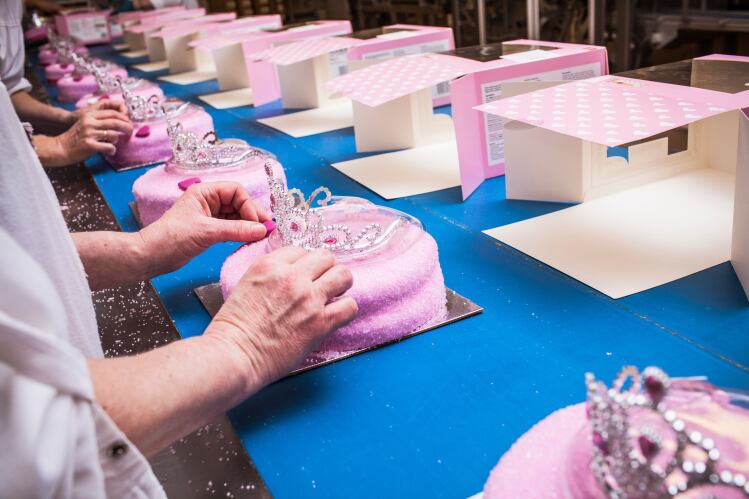
Predictive maintenance process
“Working on downtime is a key issue for ABB,” he says. “If you take the example of the digitalisation of drives and motors, simply having a dashboard where you can look at the status of the device opens the way for a predictive maintenance process. It allows you to replace a motor, for example, during planned downtime. Typically, that sort of replacement would not be planned.”
Variable speed drives (VSDs) have been a fact of life for many food manufacturers for some time – but ABB is keen to extol its energy-efficiency and broader benefits at specific points in the bakery production process, starting with mixing. “Here, today’s drives limit motor activity according to the viscosity of the dough, taking energy usage down to a minimum level.”
Bill Walker, who is responsible for engineering at Morton Mixers & Blenders in Scotland, says the basic technologies behind its Z-blade and other models have changed little over the last few years. “It has really been a matter of upgrading the electrics with a programmable logic controller [PLC] and a human-machine interface [HMI],” he claims.
Morton’s two-speed motors perform a similar function to the VSDs that ABB enthuses about, he says. “I’ve seen operators put a 25kg box of butter straight from the fridge into a mixer,” Walker recalls. “Any sort of ramping-up ensures you’re not shock-loading the machine.”
Blade design is another area in which mixer manufacturers are able to innovate. For instance, no other suppliers have anything quite like Morton’s open-bladed Gridlap mixer, says Walker. “It can be used to create batters, and the main advantage is that when you’re making muffins or other products with pieces of fruit or whole berries, it doesn’t smash them to bits,” he states.
BBF’s Gallagher includes mixing in the list of what he calls “engine-room” operations, which are relatively standardised and amenable to automation. Certainly, Morton has developed its latest systems on this basis. “Mixing times, speeds and pauses can be programmed in to avoid operator error,” says Walker, describing the benefits of the company’s PLC controls and HMI access.
The relative merits of batch and continuous mixing have been exhaustively debated, but Morton points out that, in some applications, batch production need not be as inefficient as it is sometimes portrayed. “Producing shortbread, for example, with one of our duplex batch mixers, if you’ve got it set up on the PLC with automatic filling and discharge, you can manage around four batches an hour,” says Walker.
Even where full automation is possible, it may not be the right choice for a particular operation. But there are scenarios where a semi-automated system can add the most value, in terms of maximising yield and minimising giveaway. Baker Perkins says its TruClean Wirecut machine for forming cookies and bars might be one such example.
Further profitability
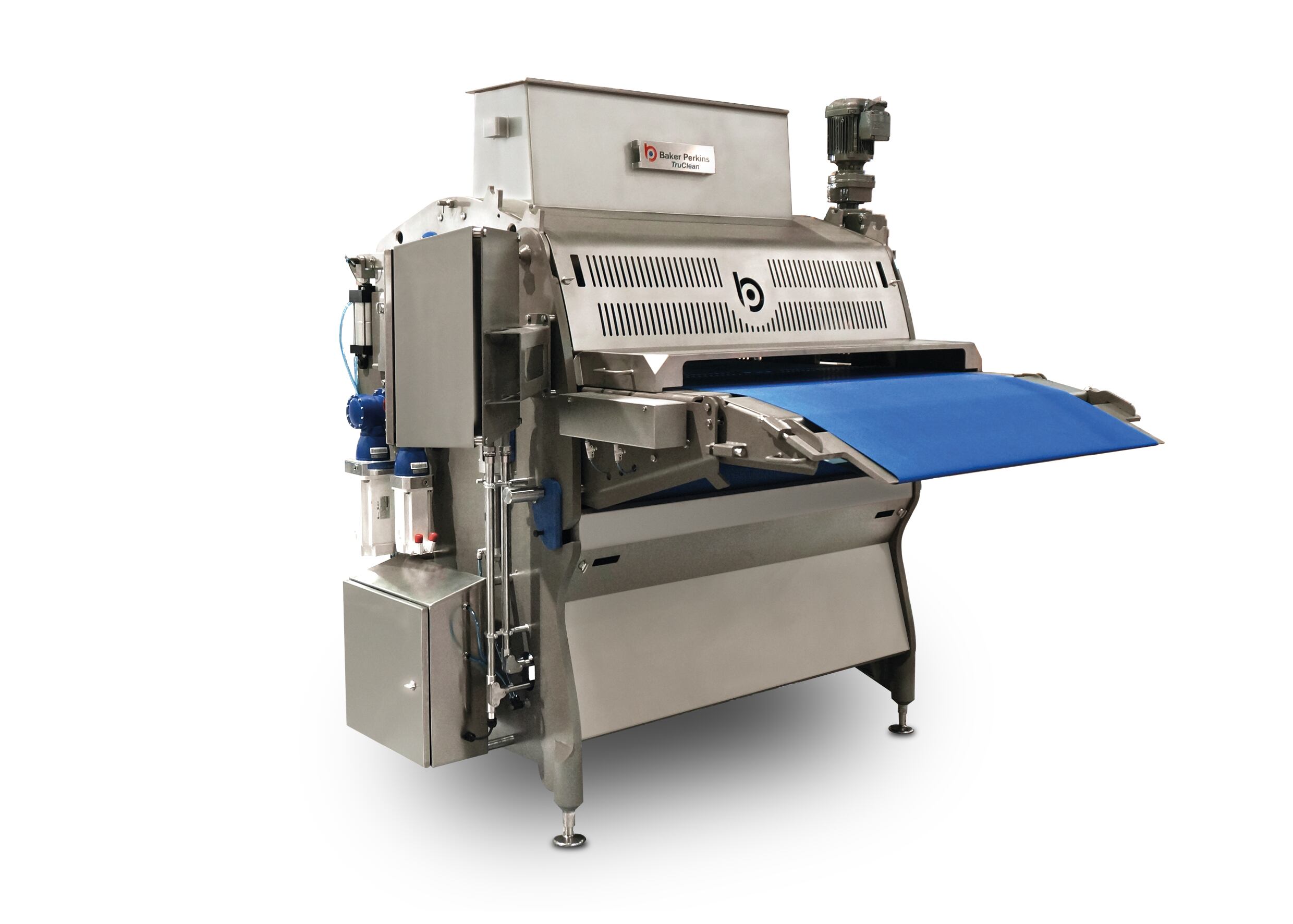
The company claims the servo-driven version of TruClean, introduced three years ago, already offers ‘best-in-class’ weight control. But its TruWeight assisted weight control system, launched earlier this year, can improve profitability still further, it says. “Across 16 lanes, having checkweighers for each lane, for example, would be rather expensive,” says marketing manager Keith Graham. “And in any case, the long-term trends are not to do with minute-by-minute variations.”
Instead, prompts from the HMI guide the operator through the procedure. Data fed back to the PLC allows average weights to be calculated and compared with target values linked to each recipe. Operators are then advised which lanes to adjust, and by how much. Changes can be made manually. Alternatively, if they are made using a stepper motor, adjustments can be carried out on the fly.
“You wouldn’t want to be making this sort of check more than once every hour or every half hour,” says Graham.
By adjusting the output from individual die cups, the system can reduce variations in cookie piece weights. Baker Perkins says that on sugar dough, tests show that standard deviation can be improved by 52%, from 1.26g to 0.6g.
Ovens represent another area where full recipe-driven automation is not only feasible but can deliver significant quality and efficiency improvements. At the same time, better understanding of, and control over, the different types of heat being applied to the various zones in the oven mean that these profiles can be much better tailored to specific products.
This is certainly an area where BBF appreciates the value of system optimisation. “We’ve ensured that we have very fine control over where the heat is going in our ovens, and where it’s coming from, in both the top and bottom zones,” says Gallagher. “We are also able to modulate the steam injection.” This type of investment went most recently to ovens at the company’s Hull site, he adds.
Baker Perkins, meanwhile, has made changes to its TruBake HiCirc convection oven, many of which are to do with hygiene and access for cleaning. An adaptation of the exterior profile might appear to be merely a cosmetic shift, but one important benefit is that it allows hybrid ovens to be created, matching convection with direct gas-fired (DGF) heating.
“You can have DGF at the front end, convection at the back end, to allow you to get a lot of heat into a product such as crackers at the outset,” says Graham. “Or, you might want an atmosphere that’s very humid early on, and that’s difficult to achieve with convection because there’s so much air movement.”
Seasonal products: a cause for celebration?

The year-round celebration cake market in the UK is currently worth £200m, growing by 1.5% in the 52 weeks to 16 June 2019, according to Kantar data supplied by ambient cake and chilled dessert specialist BBF.
But, as the company’s chief executive Jonathan Lill explains, that value growth is largely accounted for by inflation, and volumes have remained fairly static. “The market tends to be strongly impacted by licences, for films and so on,” says Lill. So, for example, the lack of major new merchandising licences over the past year goes a long way to explaining the low value and volume growth in this period, he adds.
Seasonal products – including Christmas – do not loom quite so large, but have higher growth potential, according to BBF.
“The retail value of this segment is just short of £160m, but that latest figure is 6% up on the previous year,” says Lill.
Mince pies account for around half of the seasonal bakery market, he adds. The retailers’ ability both to extend the periods when consumers purchase these products and to merchandise premium variants of mince pies, for example, has helped to ratchet up that growth.
BBF estimates that it has a 45% share of the UK celebration cakes market, and a 34% share of the seasonal baked goods segment.
Removing limitations
Although Baker Perkins has produced hybrid ovens in the past, the convection ovens it can now offer have much higher air-circulation capabilities, says Graham, so are less limiting in terms of product options.
“A true hybrid oven gives you flexibility across all bakery sectors,” he says. “Whenever customers are considering an oven, the question comes up: ‘What else could I do on it?’”
The example of ovens demonstrates that the logic behind automation does not always revolve around labour costs. As BBF explains, even very small shifts in the levels of proteins and flour in the mix can have an impact on margins. So, the more that dosing can be automated, the better those costs and margins can be controlled.
In fact, according to ABB, this is an area where many bakery businesses could – and should – make changes. “Dough-making is often still a very manual process,” says Hughes. “If it’s not done correctly, it can lead to huge wastage. Automating ingredients dosing is going to be important in the future.”
Even some of the less obvious elements in the process can make a significant difference when they are standardised and, ideally, automated. “This is true, for example, of our ability to modulate the air going into our sponge mixes,” says Gallagher at BBF. “The PLCs will do this, so no one has to intervene, and we can make the process as consistent as possible.”
Conveying may not add to the value of the product, but it is an essential function in any factory. “When the conveyor fails, production stops,” says ABB’s Hughes. “That’s where the digitalisation and automatic monitoring of conveyors comes in.”
Moves towards automation are, of course, limited by businesses’ purchasing power. Viewed from its own perspective, Baker Perkins says new investment continues to find its way into the bakery sector. “But it tends to be replacement of old equipment – for example, the consolidation of two old lines into one,” says Graham. “In biscuits in the UK, there’s a lot of installed capacity that is still performing well.”
Investment may also be a response to the needs of retail customers. Although retailers are notorious for changing their requirements (or even their suppliers) at short notice, BBF believes that many changes can be predicted and prepared for. “Often, you can see how things are shaping up, and an engineering team might be tasked with scoping out how they’d cope with a given scenario if it materialised,” says Gallagher.
Portion control

A highly topical example of this might be portion-control, adds BBF chief executive Jonathan Lill. “Having the capability to produce a smaller version of a cake is something we’d have to be ready for,” he says.
Questions of higher-level automation inevitably revolve around how manufacturers justify the expense and calculate return on investment. In this connection, it is interesting to see how expenditure is allocated in a company such as BBF. “We tend to spend around £2m a year in capex,” says Lill. “A lot of that is efficiency-based, with some allocated to maintenance and around 30% to new products.”
An exception might be made for a large capability project, Gallagher adds. “If we were looking at a new sub-category, for example, we might have more availability of capex from our backers.”
Whether broader advances in automation and process control would be classed as a ‘large capability project’ is another matter. “When it comes to real-time online production management, we’re at the consideration stage,” says Gallagher. “Will we do it some time in the future? I’d say yes.”
Interestingly, BBF acknowledges the human as well as the big data benefits in this. “As you automate, you free up a lot of the time that a wider group of people would have otherwise spent collating that data,” he points out. “Instead, they can put their time into pressurising management to do X, Y or Z.”
No matter how automated and smart your operation is, it seems there is no substitute for the human capacity for insight and problem-solving.
Cutting energy costs with eco+
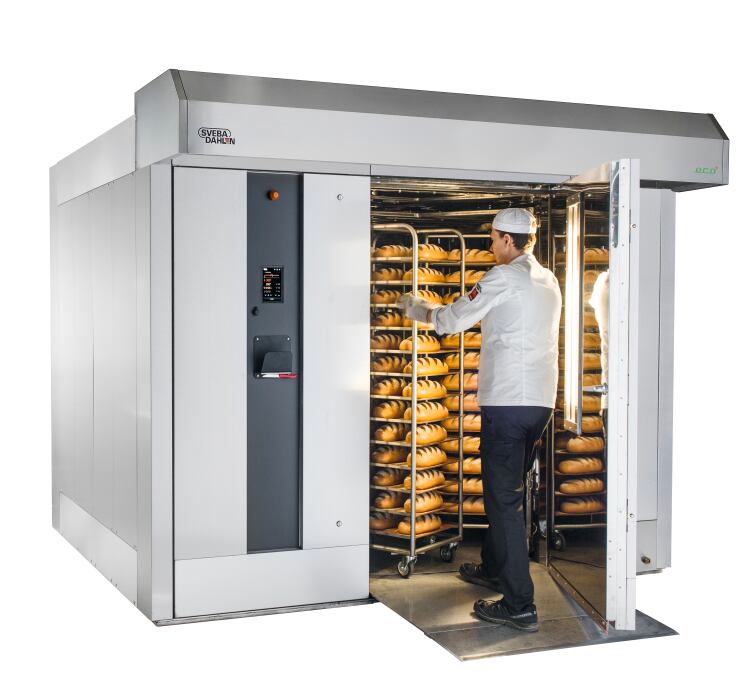
While efficiency improvements and downtime reduction might be the primary objectives for most bakery plant operators, the need to curtail energy spend doesn’t rank far behind.
“Typically, the oven is the biggest consumer of energy in an industrial bakery, with a combination of the oven, prover and associated steam boiler plant accounting for 50–60% of a business’s total consumption,” says Steve Morris, sales director at Jestic Foodservice Equipment.
“With such a demand on utilities and with energy prices continuing to rise year on year, bakers demand equipment that is not only capable of producing consistent results, but can do so using as little electric or gas as possible.”
With traditional ovens consuming large amounts of electricity, switching to a modern appliance featuring the latest technology and superior build techniques can result in significant ongoing savings, even with the initial purchase price taken into account, argues Morris.
Jestic is the UK distributor for Swedish manufacturer Sveba Dahlen, which began looking at ways it could improve the efficiency of its range of rack and deck ovens a number of years ago. Using heat cameras and advanced sensors to detect where the biggest energy losses were, the company went on to develop the eco+ technology.
The eco+ features thicker insulation, bespoke milled door gaskets and closely fitting seals, which all result in a quicker heat-up and reduced temperature recovery once the door has been opened, the company says. In all, eco+ can save up to 35% compared to standard models in the range, it adds.
“Designed to take control of the energy used by a deck oven or rack oven, the eco+ technology allows the units to retain the heat for longer and uses optimised software to reduce energy consumption,” Morris suggests. “The ovens are also ergonomically designed to create equipment that provides better working conditions for those operating them.”
Additional features are aimed at controlling energy efficiency. Designed to alternate the rack rotation direction, Sveba Dahlen’s Increased Baking Surface (IBS) technology is claimed to offer a quicker, more even bake, which in turn reduces the energy consumed.
Its Slow-Start function is designed specifically for sensitive bakery products such as quiches, whereby the technology works in conjunction with IBS to allow the product to gently set before commencing the rotation, further reducing wastage and creating a more consistent product.
The deck and rack ovens can also be fitted with SD-Touch control, allowing operators to independently control each deck, set the rack rotation and run the appliance at the optimum level for particular baked goods through precision control of the conditions inside.

